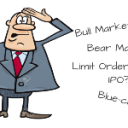This is my last article for Stockopedia. Thanks for being such a supportive crowd. The truth is that I’ve been on a huge learning journey myself over the past 12 years. Most investors don’t have the time to spend endless days thinking, reading and writing about investing. So it’s been a privilege for me and I hope at least some of it has been useful for you.
Ten years ago, when Stockopedia launched the first iterations of the tools on the platform today, one of the really striking new features was the Guru Screens. These ready-to-go strategies pair up the power of the Screener (with its 460 different financial ratios) with the approaches of some of the most influential legends of investing.
Whether you’re interested in small-cap growth, large-cap dividends, bargain value, unloved contrarians or blistering momentum, there’s a Guru Screen for you.
But even more than that, the Guru Screens are an instructive guide to what you can really do with the screener. You may want to use the types of quality measures that Warren Buffet likes. Or perhaps apply valuation filters like Ben Graham would have done. Or maybe the fast-paced growth rules that Bill O’Neil applies in his strategy. The GuruScreens are a window on what the best investors really look for.
Crucially, of course, the screens show constantly updated lists of companies that pass their rules. So they’re an ideas generator. And with baskets of stocks swept up every quarter into portfolios for each screen, the results have been monitored closely.
As the writer covering these strategies, the combination of ‘current qualifiers’ and screen performance was a surprisingly useful guide to market conditions and sentiment. I ended up feeling like I knew some of these legends personally. In fact, there were moments when I did actually find myself face-to-face with one or two of them. But more on that later.
Here’s a view of how all the long-only Guru Screens have performed, in aggregate, since they were launched in the UK in late 2011:
Now, a long term chart like this smooths out all manner of market events. The Covid collapse and rebound is very clear. But the shock of Brexit in June 2016 now looks like a mere blip - though it sure didn’t feel that way at the time.
In terms of broader trends, you can…













